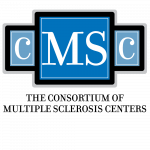Background:
Advances in seating and wheeled mobility technology can benefit the MS community, facilitating more independence with mobility for daily activities, at home and in the community. Learn about the benefits and limitations of these technologies, common coverage criteria, and additional resources.
Objectives: Discuss benefits and limitations of new technologies in seating and wheeled mobility
Identify common coverage criteria for different technologies
Share resources for additional information
Methods:
Accumulation of many individual cases, using technologies in seating and wheeled mobility to help manage the common symptoms of MS.
Results:
There are new technologies that benefit users of many different levels of technology. For manual wheelchair users, power-assist wheels can address weakness, fatigue, and overuse syndromes of the upper extremities without changing to power.
For power wheelchair users, independent repositioning mode can help to address pain, spasticity, fatigue, skin integrity risk and functional positioning. It will simplify a combination of power features with minimal cognitive requirement. Predictive maintenance technology connects power wheelchair users and service technicians through a single intuitive platform improves communication and helps one to be better prepared for the unexpected.
For pressure-reliving cushions, a new pneumatic option that has a safety alert if it loses air if a flat cushion might go unnoticed due to impaired sensation or cognition
Conclusions:
When properly prescribed and fit, seating and wheeled mobility technologies can be an important component of a comprehensive plan to manage MS symptoms. Meeting coverage criteria is an important factor in obtaining technology. Resources for learning more about technologies and for common coverage criteria will are helpful and will be provided.
[learn_press_profile]
